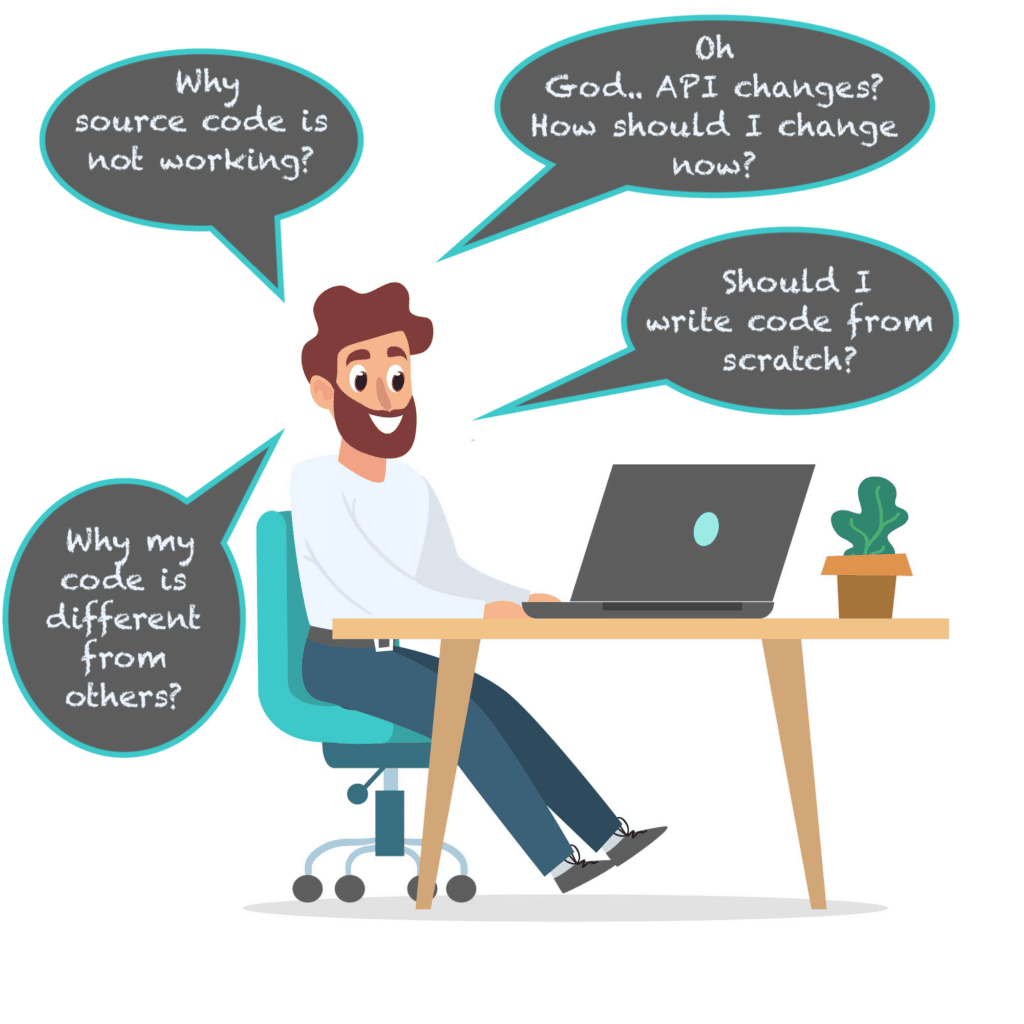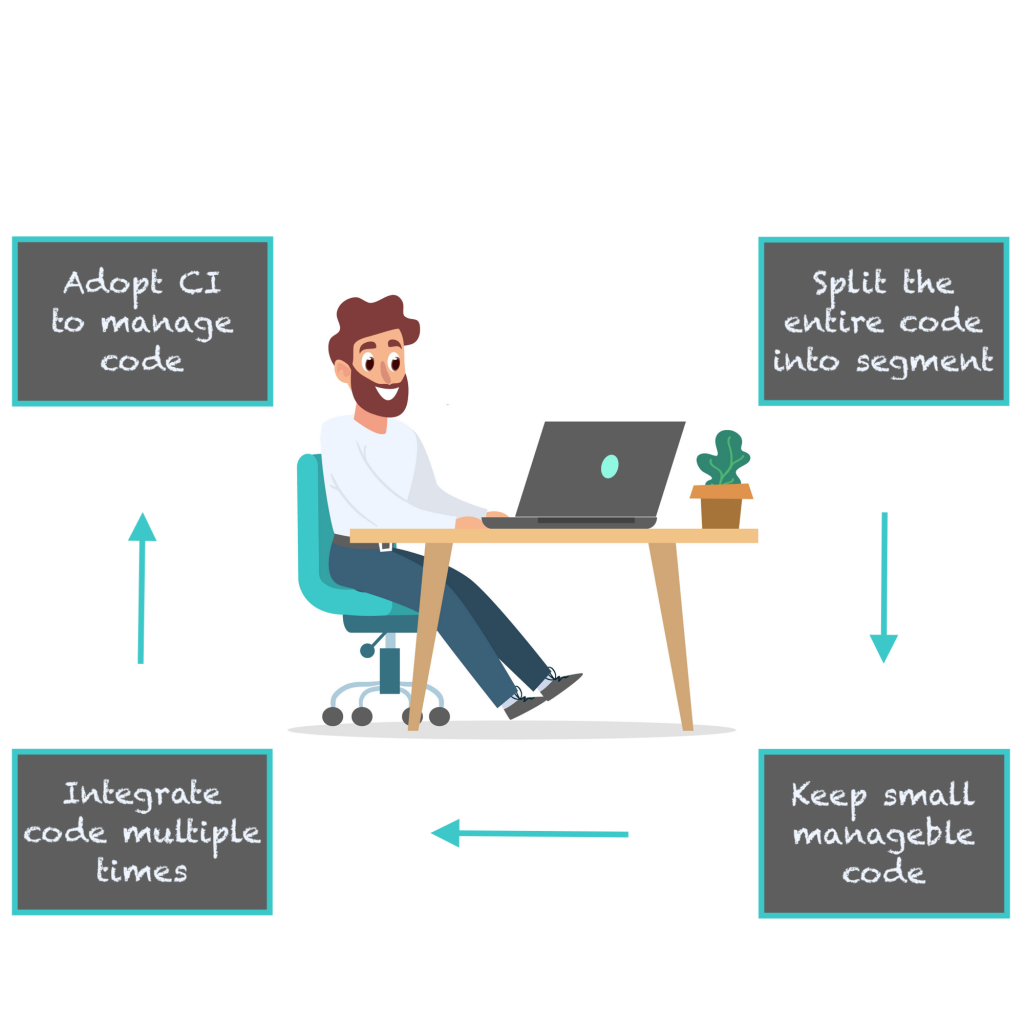Continuous software development has become the heart of software engineering and technology teams across the world are increasingly using the approach. But what exactly is it, and why is it so effective? This is what I want to explore in this article.
Let’s start with an example. I am a developer and developing an application on my own. I don’t see any risk with my source code. Later, on the same source code, multiple developers or multiple teams start working. Now, conflicts are expected while developing as everyone is working on the same code base. Generally, conflicts occur when two or more developers have independently made a change to the same area of a file or deleted a file. The continuous process of development within the team is going on and they are continuously changing the code, classes, methods, and functions as per their requirement. Now, if we follow this process, either we have to resolve conflicts manually or follow some process to avoid conflicts completely. This takes time and a lot of effort.

We have to find some effective way to solve this problem. Now, the question is, how are we going to resolve this? Let’s try to find the answer to this question.
What is the solution for the above scenario?
We can resolve the problem effectively with the following steps.
- Divide your code into some small parts where we can manage the code
- Integrate this code as many times you want
- Rely on “continuous” integration methodology for coordination within the team
What is “continuous” in software engineering?
Continuous means without interruption. In software application development avoiding discontinuity between development and deployment, is called continuous development, which reduces process time of deliveries of the application. So continuous development in software engineering is a key practice. Let’s examine it in more detail.
Continuous development
This is the activity performed to deliver an application in the real world. Continuous integration, continuous testing, continuous delivery, and continuous deployment are all processes which we include in continuous development.
With continuous development, we can automate and streamline the processes of building software, testing software, and deploying new features into live environments. As mentioned, continuous development includes several steps to ensure an organized process to improve and deploy a new feature.
Continuous development allows us to quickly introduce new code, get feedback, and reduce the time between development and deployment.
The main benefits of continuous development include:
- Quick delivery of new application features. In continuous development, new features are developed and deployed with the above-mentioned processes. Businesses benefit from the quick delivery, enabling them to adjust to changing customer demands.
- Quality products. Due to automation, we can avoid human errors, and we can get feedback from automation to improve applications. Continuous feedback with automation processes leads to quality products.
- Risk prevention. We can avoid human errors and increase overall efficiency.
- Increased productivity. Due to the continuous feedback process, developers can focus on software and have stable products in the next iterations.
- Fewer resource requirements. Due to automated processes, we can achieve a successful product with fewer resources and with less time.
Continuous Integration
As we discussed above, continuous development is the first step of continuous integration. It’s a practice where developers always work with the code in a shared repository and merge their code changes with master code as and when required. With this simple practice of regular integration in the repository, we can detect and solve the errors/conflicts easily and quickly.

The main benefits of continuous integration include:
- Cost-effective. Continuous integration is a low-cost integration.
- Avoids integration time. With continuous integration, you require less time to integrate multiple developers’ code.
- Software delivery. Without continuous integration, it becomes more difficult to find and fix problems. As a result, you put at risk project schedules. Continuous integration is key to fast software delivery.
In recent years, continuous integration has become a widely used best practice in software development. It is based on revision control, automated build creation, and automated testing.
Continuous delivery
This is the step where source code should be ready in a deployable state so that at any point in time we can deliver the software application to the real world. Every time there are source code changes these go into production quickly and regularly.
Software companies use this approach so that they can release their software multiple times within a short period of time. As a result, teams can build, test, and release software faster and more frequently. It reduces cost, time, and risk.
People sometimes confuse continuous delivery and continuous deployment. In continuous deployment, every change goes through the pipeline and is automatically put into production. In continuous delivery this process is manual.

The main benefits of continuous delivery include:
- Software release plan. You can decide to release daily, weekly, monthly, or as per your requirement.
- Improved quality. If you release software within a small period of time, it is easy to troubleshoot in case of a problem
- Continuous feedback. Due to more frequent release cycles, feedback cycles from customers accelerate. This means you can plan for better software in small releases.
- Customer satisfaction. More frequent feedback from customers, means you can make sure you are meeting and exceeding their expectations.
Continuous deployment
This is the process where continuous delivery moves ahead to release the application in the real world. In this process, deployment happens automatically without human interference.
This is the final step where features are released into software production that have passed automated tests. In continuous deployment, the latest version passes all the automated tests and it is automatically released to the test or production environment.

The main benefits of continuous deployment include:
- Faster movement. You not only reduce risks and catch bugs quickly but also move rapidly to working software.
- Continuous improvement. Software improves significantly with continuous development. It also has improved visibility.
Summary: Continuous development is a key approach for delivering high quality software
In short, continuous development is the term which includes continuous integration, continuous delivery, and continuous deployment. Technology teams are increasingly using the approach to ensure they are delivering high quality software quickly and efficiently. In future articles, we’ll go into more detail about the different aspects of continuous development, and some of the typical tools that we use.




